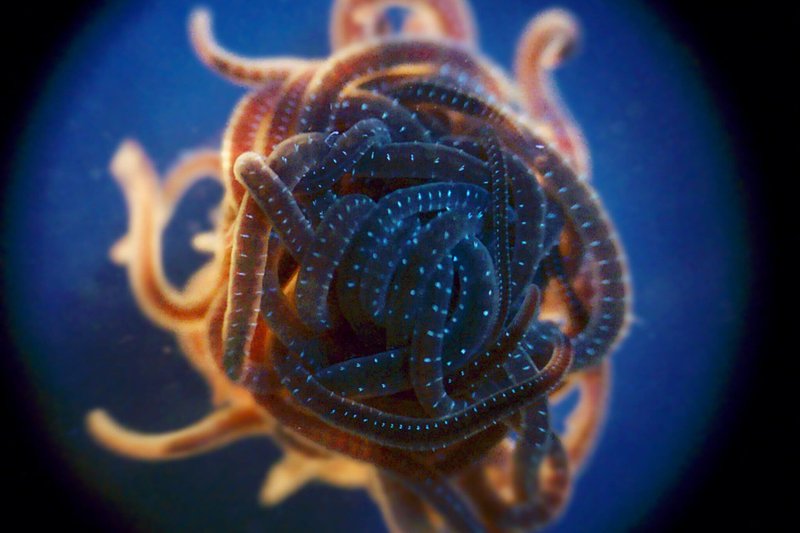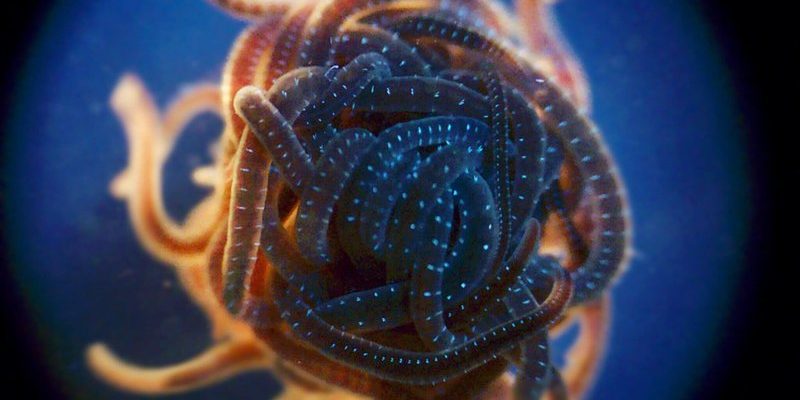
Bootlace worms are not your typical marine animals. In fact, they can grow quite long—sometimes reaching lengths of up to 60 meters! They can be seen in various coastal waters, where they weave through crevices and tide pools. Their name comes from their resemblance to the laces you’d find on your shoes. But getting to know these creatures goes beyond just their looks; it’s about understanding their role in the ecosystem and how you can help observe and record important data on them.
What Are Bootlace Worms?
Bootlace worms, scientifically known as *Lineus longissimus*, are part of the marine worm family. They are polychaetes, which means they have bristles along their bodies. These worms are usually found in shallow coastal waters and can often be seen during low tide. If you’ve ever spotted one, you might have noticed their vibrant colors that can range from yellow to purple.
Interestingly, these worms don’t just slither around aimlessly. They play a crucial role in their environments. By burrowing into the sand, they help aerate it, which is vital for other marine life. Moreover, their unique habitat preferences make them great indicators of ocean health. So, the next time you’re at the beach, keep an eye out—your observations could provide valuable data!
Why Are Bootlace Worms Important for Citizen Scientists?
Citizen science is about involving everyday people in scientific research, and bootlace worms present a perfect opportunity for that. By collecting data on these creatures, you can contribute to a bigger picture of marine health and biodiversity. You’re basically becoming a part of a science team, tracking changes over time and helping researchers understand how these worms interact with their environments.
One of the most exciting parts of observing bootlace worms is the chance to document their behavior. Are they more active during certain tides? How do they react to temperature changes in the water? These kinds of observations are incredibly valuable. They can help scientists track changes in ocean conditions and even inform conservation efforts. Plus, being part of something bigger is rewarding!
How to Observe Bootlace Worms
Getting started with observing bootlace worms is easier than you might think. First, find a local beach or coastal area where they are known to thrive. Ideally, head out during low tide, as this is when they are most visible. You’ll want to look in tide pools, sandy areas, and even under rocks. It’s like a treasure hunt, where your prize is understanding these incredible creatures.
When you spot a bootlace worm, take a moment to observe its behavior. Watch how it moves and interacts with its environment. If you can, keep a journal to note your findings. Include details like location, time of day, and any specific behaviors you notice. This will not only help you remember what you’ve seen, but it also adds valuable data to the scientific community.
Tools for Observation and Data Collection
To make the most of your bootlace worm observations, having the right tools can enhance the experience. Here are some essentials to consider:
- Notebook: For jotting down your observations.
- Camera: To capture photos of the worms in action.
- Field Guide: A book or app that helps identify marine life.
- Measuring Tape: To document the length of any worms you find.
- Binoculars: If you’re observing from a distance, these can be handy.
These tools can transform your observations from casual sightings to structured data collection. Plus, they can make the whole experience even more engaging.
Challenges You May Encounter
Like any scientific endeavor, observing bootlace worms comes with its challenges. One common issue is identifying them among other marine life. They can blend in easily with their surroundings. To help with this, take your time and don’t rush your observations. Look closely at the colors and textures—every detail counts.
Another challenge is knowing when and where to find them. Depending on your location, bootlace worms may not be present year-round. Checking local reports or connecting with a marine science group can help you pinpoint the best times for observations. It’s all part of the adventure!
Sharing Your Findings
Once you’ve collected your observations, don’t keep them to yourself! Sharing your findings can contribute to important scientific data and foster community engagement. Many organizations encourage citizen scientists to submit their observations online. Websites like iNaturalist or local marine biology forums often have platforms for sharing data.
When you share your findings, include clear photos and detailed notes. This not only helps scientists but also inspires others to engage with marine life. Imagine how exciting it would be to see your observations not just make a difference but also spark someone else’s interest in marine science!
Observing bootlace worms isn’t just a quirky hobby; it’s a way to connect with the ocean and make a real contribution to marine science. By getting involved, you’re helping to track the health of our oceans while also enjoying the beauty of nature. Remember, every observation counts. Whether you’re a seasoned beachgoer or a curious newcomer, there’s a world to explore right at the water’s edge.
So, grab your notebook, head out during low tide, and let the adventure of citizen science begin. You never know what you might discover—each encounter with a bootlace worm is another step towards understanding our ocean’s mysteries!

